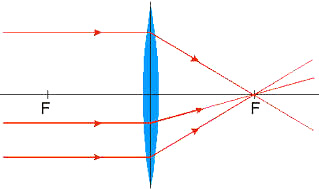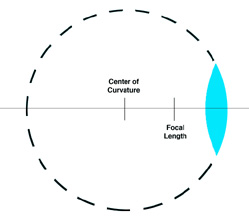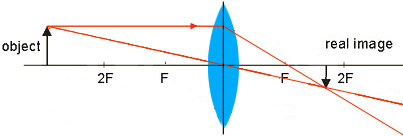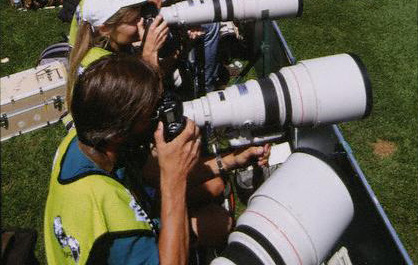 |
When rays of light enter the
lens they bend according to the rules of
refraction. The focal length of a lens is
the point which parallel light rays come
together after bending in the lens. This happens when the lens'
focusing control is set at
infinity because objects from very far away have rays of light coming
in almost parallel to the camera lens. |
The focal length of the lens is determined by the amount of curvature of the lens. If the lens were made into a spherical piece of glass, the center of curvature of the lens is the point which would be the center of the sphere. The focal point is half of the center of curvature, so the larger the center of curvature, the larger the focal length. |
 |


